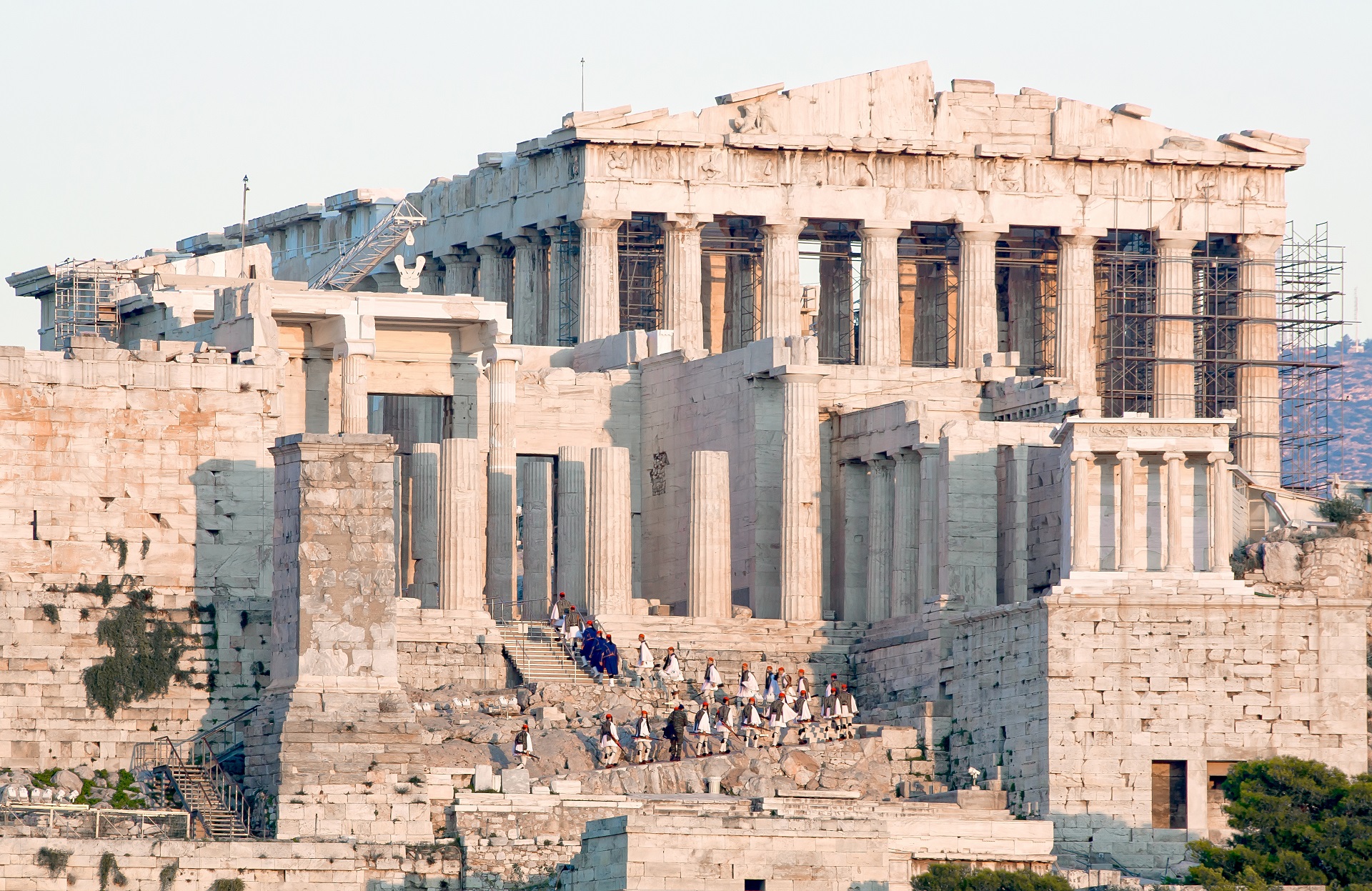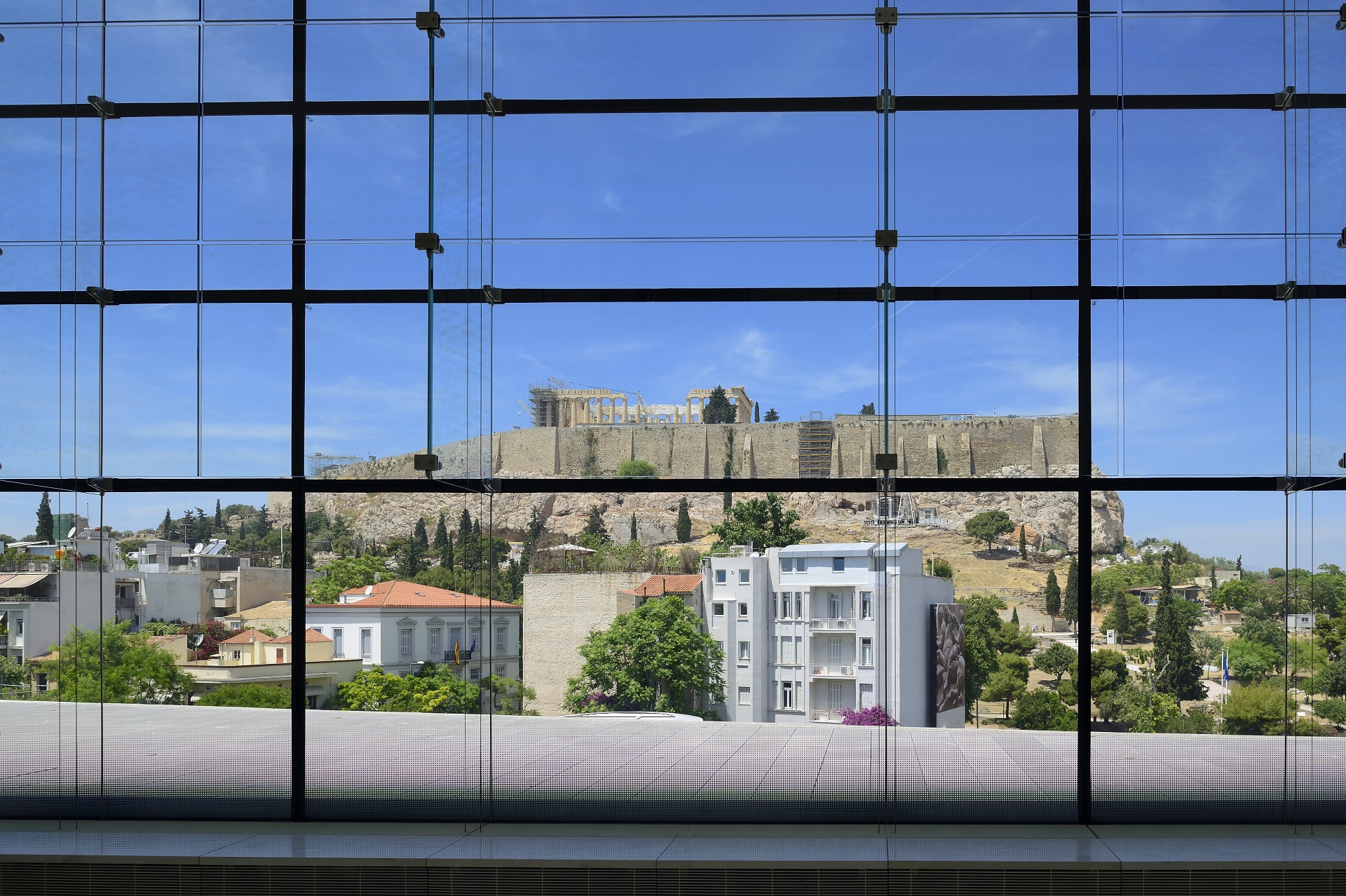The ancient monuments of the Acropolis have withstood the ravages of past centuries.
From those of the antiquity, then the ones of the Middle Ages and of course those of modern times. Immediately after the founding of the Greek State, discussions about the construction of an Acropolis Museum to house all these magnificent monuments began. However, a genuinely good construction was not finished until 2007.
Few words about the Acropolis

The Acropolis of Athens is an ancient citadel located on an extremely rocky outcrop above the city of Athens. It contains the remains of several ancient buildings of great architectural and historical significance. The most famous one is the Parthenon.
The word “Acropolis” derives from the Greek words ἄκρον (Akron, “highest point, extremity”) and πόλις (polis, “city”). Although there are many other such citadels in Greece, the historical significance of the Acropolis of Athens is such that it is commonly known as “The Acropolis” without any further qualification. Most of its monumental buildings were built during the fabled Golden Age of Pericles, during the 5th century BC.
The Parthenon is a former temple, dedicated to the Greek goddess Athena, whom the people of Athens considered their patron. It is the most important surviving building of Classical Greece, generally considered the zenith of the Doric order. Its decorative sculptures are considered some of the high points of Greek art. The Parthenon is regarded as an enduring symbol of Ancient Greece, Athenian democracy and western civilization, one of the world’s greatest cultural monuments and one of the 7 World Wonders of antiquity.
The Acropolis Museum

The Acropolis Museum was founded to exhibit all the significant finds from the Sacred Rock (atop which the Acropolis is built) and its foothills. It was designed by Swiss architect Bernard Tschumi, in collaboration with Greek architect Michael Photiadis. The Museum was inaugurated in the summer of 2009. It hosts its collections across three levels, as well as in the archaeological excavation that lies at its foundations and was brought to the light during construction phase!
The Museum has a total area of 25,000 square meters, with an exhibition space of over 14,000 square meters. It is offering all the amenities expected in an international museum of the 21st century.
Located on the ground floor, is the “Gallery of the Slopes of the Acropolis,” housing finds from the sanctuaries that were established on the slopes of the Acropolis, as well as objects that Athenians used in everyday life from all historical periods.
The nine-meter high, naturally lit “Archaic Gallery,” in the east and south sections of the first floor host the magnificent sculptures that graced the first temples on the Acropolis. It also displays the votive offerings dedicated by the worshippers, such as the beautiful Archaic Korai (depictions of young women), the Hippeis (horse riders), statues of the Goddess Athena, sculptures of male figures, marble reliefs, and smaller bronze and clay offerings.
The Museum’s exhibition escalates on the third floor, in the glass-encased “Parthenon Gallery.” The relief sculptures of the Parthenon frieze depicting the Panathenaic procession are exhibited in continuous sequence along the perimeter of the external surface of the rectangular concrete core of the Gallery.
The metopes, the marble slabs with relief representations from Greek mythology, are exhibited in between the stainless steel columns of the Gallery, which are the same in number as the columns of the Parthenon. The colossal figures of the two pediments have been placed on pedestals on the east and west sides of the Gallery. The east pediment depicts the birth of the Goddess Athena, emerging from the head of her father Zeus, and the west pediment depicts the battle between Athena and Poseidon over the land of Attica.
The perimeter of this exhibition matches that of the original Parthenon, and one has but to look to his left, to see it in all its glory and imagine what it was like!
Having seen the Parthenon Gallery, the visitor can then return to the first floor to complete the tour with the series of works that were created after the construction of the Parthenon, namely the Propylaea, the temple of Athena Nike and the Erechtheion.
The north wing of the first floor displays striking Classical sculptures and their Roman copies, as well as votive and decree reliefs dating to the 5th and 4th centuries BC, relief bases of sculptures and portraits, and finally, select works dating from the end of antiquity and the early Byzantine period.
The Museum’s exhibition program is also enriched with the extensive finds from the ancient Athenian city, which were uncovered during the archaeological excavation that took place prior, to the construction of the Museum. The excavation is visible from different points on the ground and upper floors of the Museum, through a series of well-positioned large glass openings. Visitors will soon be able to walk among the remains of this ancient Athenian neighborhood.
Admission
Open Hours
1 April – 31 October:
Monday: 8:00 a.m. – 4:00 p.m.
Tuesday to Thursday: 8:00 a.m. – 8:00 p.m.
Friday: 8:00 a.m. – 10:00 p.m.
Saturday & Sunday: 8:00 a.m. – 8:00 p.m.
(Last admission 30 minutes before closure)
1 November – 31 March:
Monday to Thursday: 9:00 a.m. – 5:00 p.m.
Friday: 9:00 a.m. – 10:00 p.m.
Saturday and Sunday: 9:00 a.m. – 8:00 p.m.
(Last admission 30 minutes before closure)
Closed: 1 January, Easter Sunday, 1 May, 25 and 26 December
General Admission Fee: 5 euros.
Official website: www.theacropolismuseum.gr


